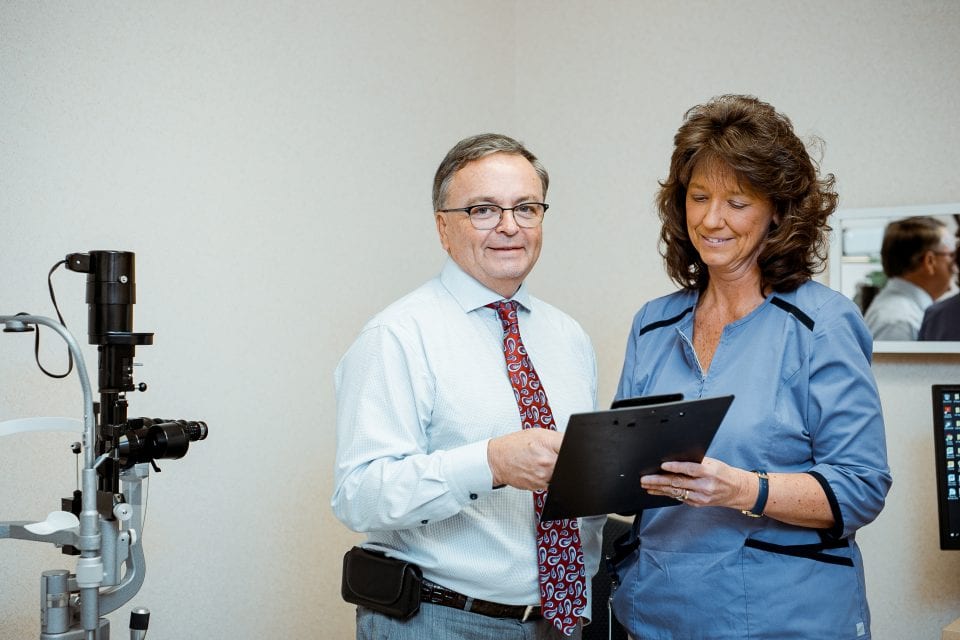
Macular Degeneration
Macular Degeneration
The retina plays a central role in visual perception, enabling you to see objects in your field of vision. Composed of millions of photoreceptor cells at the back of the eye, the retina captures light and converts it into electronic impulses that travel to the brain, where they are converted into images. The macula, at the center of the retina, is responsible for central vision and the ability to distinguish colors. When the macula becomes damaged, loss of vision occurs.
Symptoms
As people age, they may become vulnerable to macular degeneration, the leading cause of blindness in the United States. Age-related macular degeneration (AMD) accounts for 90 percent of severe vision loss. Typically affecting people over the age of 60, most frequently women, AMD causes a decrease in central vision, making it difficult to read and engage in other tasks that require fine discrimination. Distorted vision and the appearance of wavy lines over the visual field may also result from macular degeneration. These symptoms can manifest themselves suddenly or progress gradually over time, depending on whether the condition involves “wet” or “dry” macular degeneration.
Wet (neovascular) macular degeneration, the most advanced form of AMD, occurs when abnormal blood vessels forming behind the macula break, releasing blood and fluid. This causes macula disruption and causes severe damage. Symptoms appear rapidly with this form of AMD.
With dry (non-neovascular) macular degeneration, the photoreceptor cells that make up the macula gradually break down, eroding the clarity of a person’s central vision. Blurry vision is the first sign of dry AMD, which may affect one or both of the eyes.
Treatments
The treatment of wet macular degeneration includes injections of medications into the eye, laser, and oral supplements.
Schedule An Appointment
Make an appointment with our ophthalmologist today.
Ophthalmology Signs & Symptoms
The most common signs and symptoms, and risk factors of eye disease seen in our ophthalmology patients from Pinehurst, Southern Pines, Fayetteville, and beyond.
What Is An Ophthalmologist?
Ophthalmologists are specially trained to provide a full spectrum of eye care, from prescribing glasses to complex and delicate eye surgery.
Our Ophthalmologist Provider
Leading Ophthalmologist in Pinehurst, Southern Pines, Fayetteville, NC & Beyond.




